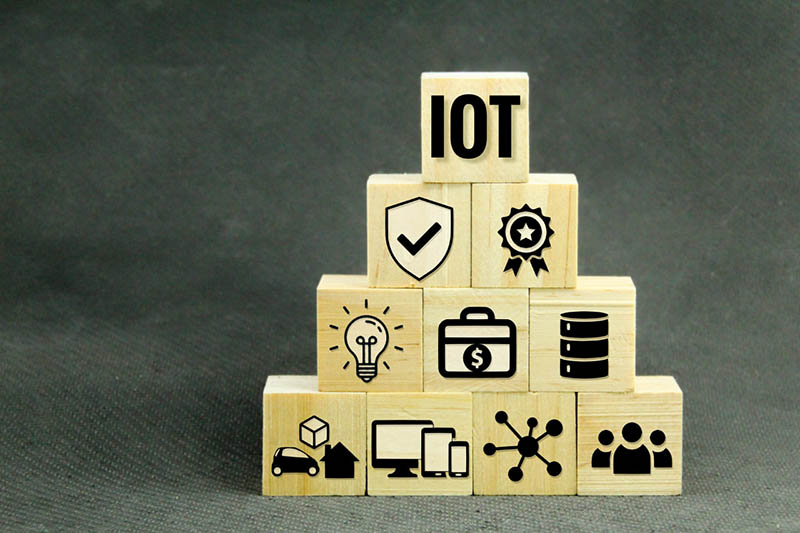The Internet of Things (IoT) has emerged as a transformative force, reshaping the way we interact with technology. In simple terms, IoT refers to the vast network of interconnected devices that communicate and share data with each other through the internet. This interconnected web of devices spans from everyday items like household appliances and wearable gadgets to industrial machines and smart city infrastructure.
1. Introduction
A. Definition of the Internet of Things (IoT)
B. Significance of IoT in technology
2. Evolution of IoT
A. Historical background
B. Key milestones
3. Core Components of IoT
A. Sensors and devices
B. Connectivity
C. Data processing
D. User interface
4. Impact on Technology
A. Advancements in communication
B. Automation and efficiency
C. Enhanced data collection and analysis
D. Security concerns
5. IoT in Daily Life
A. Smart homes
B. Wearable technology
C. Industrial applications
D. Healthcare
6. Future Trends in IoT
A. Integration with artificial intelligence
B. 5G and IoT synergy
C. Environmental applications
D. Ethical considerations
7. Challenges and Solutions
A. Interoperability issues
B. Privacy concerns
C. Cybersecurity challenges
D. Industry collaborations
8. Case Studies
A. Successful IoT implementations
B. Lessons learned from failures
9. The Role of IoT in Business
A. Supply chain management
B. Customer experience
C. Predictive maintenance
D. Cost savings
10. IoT Regulations and Standards
A. Government initiatives
B. Industry compliance
11. Advantages and Disadvantages
A. Pros of IoT
B. Cons and potential risks
12. IoT and Sustainable Development
A. Energy efficiency
B. Environmental impact
13. Real-world Examples
A. Smart cities
B. Connected cars
C. Agriculture and IoT
D. Smart grids
14. Educating the Public
A. Promoting IoT awareness
B. Addressing misconceptions
15. Conclusion
A. Recap of key points
B. Future implications of IoT in technology
What is the Internet of Things (IoT) and how does it affect technology?
The Internet of Things (IoT) has become an integral part of our rapidly advancing technological landscape. It refers to the interconnected network of devices, sensors, and systems that communicate and share data over the internet. This article explores the definition, evolution, impact, and future trends of IoT, shedding light on its role in daily life, business, and sustainable development.
1. Introduction
A. Definition of the Internet of Things (IoT)
The Internet of Things, or IoT, encompasses a vast network of physical devices and everyday objects that are embedded with sensors, software, and connectivity, allowing them to collect and exchange data.
B. Significance of IoT in technology
In the ever-evolving realm of technology, IoT plays a pivotal role in shaping the way devices communicate, share information, and enhance overall efficiency.
2 Evolution of IoT
A. Historical background
The concept of IoT has roots dating back to the early 1980s, with the first internet-connected device being a Coke machine at Carnegie Mellon University. Since then, IoT has undergone significant evolution.
B. Key milestones
From RFID technology to the development of smart appliances, the journey of IoT has been marked by key milestones that have contributed to its current state of ubiquity.
3. Core Components of IoT
A. Sensors and devices
At the heart of IoT are sensors and devices that collect data from the environment, ranging from temperature and humidity to motion and light.
B. Connectivity
For IoT to function seamlessly, devices need to be connected. This can be achieved through various means, including Wi-Fi, Bluetooth, and cellular networks.
C. Data processing
Once data is collected, it undergoes processing through cloud computing or edge computing, transforming raw information into actionable insights.
D. User interface
The user interface is the bridge between humans and IoT devices, allowing for interaction and control.
4. Impact on Technology
A. Advancements in communication
IoT has revolutionized communication between devices, enabling them to share real-time information and coordinate actions.
B. Automation and efficiency
Through automation, IoT has streamlined processes, reducing human intervention and increasing overall efficiency.
C. Enhanced data collection and analysis
The vast amount of data generated by IoT devices facilitates in-depth analysis, leading to informed decision-making and improved services.
D. Security concerns
Despite its benefits, IoT introduces security challenges, with the potential for unauthorized access to sensitive data.
5. IoT in Daily Life
A. Smart homes
IoT has transformed homes into smart, interconnected spaces, where devices like thermostats, lights, and security systems can be controlled remotely.
B. Wearable technology
Wearable devices, such as smartwatches and fitness trackers, leverage IoT to monitor health metrics and provide personalized insights.
C. Industrial applications
In industries, IoT enables predictive maintenance, optimizing machinery performance and reducing downtime.
D. Healthcare
IoT plays a crucial role in healthcare, with applications ranging from remote patient monitoring to smart medical devices.
6. Future Trends in IoT
A. Integration with artificial intelligence
The convergence of IoT and artificial intelligence promises enhanced capabilities, enabling devices to learn and adapt.
B. 5G and IoT synergy
The rollout of 5G networks will further propel IoT, providing faster and more reliable connectivity.
C. Environmental applications
IoT can contribute to environmental sustainability by monitoring and optimizing resource usage.
D. Ethical considerations
As IoT continues to expand, ethical considerations surrounding data privacy and consent become paramount.
7. Challenges and Solutions
A. Interoperability issues
The compatibility of diverse IoT devices poses challenges, requiring industry-wide standards for seamless integration.
B. Privacy concerns
The collection of personal data by IoT devices raises privacy concerns, necessitating robust privacy policies and regulations.
C. Cybersecurity challenges
As IoT expands, the risk of cyber threats increases, demanding continuous efforts to enhance security measures.
D. Industry collaborations
Collaborations among industries are essential to address challenges collectively and foster innovation in the IoT space.
8. Case Studies
A. Successful IoT implementations
Examining successful IoT implementations provides valuable insights into best practices and strategies.
B. Lessons learned from failures
Analyzing failures in IoT projects offers valuable lessons, guiding future endeavors for improved outcomes.
9. The Role of IoT in Business
A. Supply chain management
IoT optimizes supply chain processes, providing real-time visibility and reducing inefficiencies.
B. Customer experience
Businesses leverage IoT to enhance customer experiences through personalized services and targeted marketing.
C. Predictive maintenance
The ability to predict equipment failures allows businesses to schedule maintenance proactively, minimizing downtime.
D. Cost savings
IoT contributes to cost savings by improving operational efficiency and resource utilization.
10. IoT Regulations and Standards
A. Government initiatives
Governments worldwide are establishing regulations to ensure the responsible and secure deployment of IoT.
B. Industry compliance
Adherence to industry standards is crucial for the seamless integration and operation of diverse IoT devices.
11. Advantages and Disadvantages
A. Pros of IoT
The benefits of IoT include increased efficiency, improved decision-making, and enhanced convenience.
B. Cons and potential risks
Despite its advantages, IoT poses challenges such as security risks, privacy concerns, and potential job displacement.
12. IoT and Sustainable Development
A. Energy efficiency
IoT contributes to energy conservation by optimizing the use of resources and reducing waste.
B. Environmental impact
Monitoring and controlling environmental factors through IoT technologies can mitigate the impact on ecosystems.
13. Real-world Examples
A. Smart cities
IoT is transforming urban living by optimizing infrastructure, transportation, and public services.
B. Connected cars
The automotive industry utilizes IoT for vehicle connectivity, enhancing safety and improving driving experiences.
C. Agriculture and IoT
In agriculture, IoT enables precision farming, optimizing crop yield and resource utilization.
D. Smart grids
IoT facilitates the creation of smart grids, improving energy distribution and consumption.
14. Educating the Public
A. Promoting IoT awareness
Public awareness campaigns are essential to educate individuals about the benefits and risks of IoT.
B. Addressing misconceptions
Clearing misconceptions about IoT fosters a better understanding and acceptance of the technology.
15. Conclusion
A. Recap of key points
The Internet of Things has evolved into a transformative force, impacting various aspects of our lives and industries.
B. Future implications of IoT in technology
As IoT continues to advance, its integration with other technologies and the resolution of challenges will shape its future impact.
FAQs
Q: Is IoT only applicable in urban settings?
A: No, IoT has applications in various settings, including rural areas, agriculture, and healthcare.
Q: How does IoT contribute to energy efficiency?
A: IoT optimizes energy usage by monitoring and controlling devices based on real-time data.
Q: Are there any privacy concerns associated with IoT devices?
A: Yes, the collection of personal data by IoT devices raises privacy concerns, emphasizing the need for robust regulations.
Q: Can IoT be integrated with existing business systems?
A: Yes, many businesses integrate IoT seamlessly with their existing systems for improved efficiency and productivity.
Q: What role does 5G play in the future of IoT?
A: 5G networks will enhance the connectivity and performance of IoT devices, enabling faster data transfer and lower latency.


